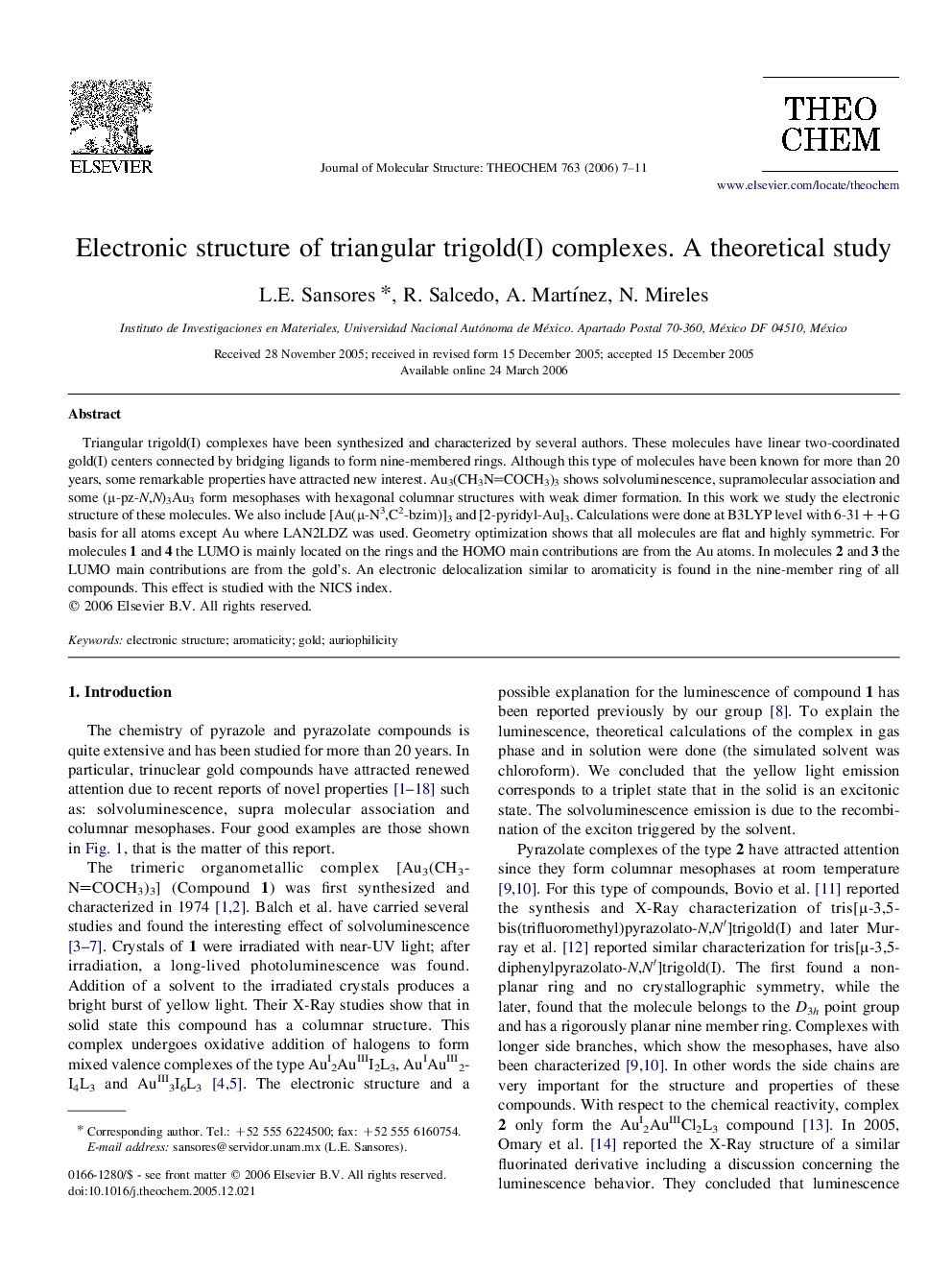| Article ID | Journal | Published Year | Pages | File Type |
|---|---|---|---|---|
| 5419083 | Journal of Molecular Structure: THEOCHEM | 2006 | 5 Pages |
Abstract
Triangular trigold(I) complexes have been synthesized and characterized by several authors. These molecules have linear two-coordinated gold(I) centers connected by bridging ligands to form nine-membered rings. Although this type of molecules have been known for more than 20 years, some remarkable properties have attracted new interest. Au3(CH3NCOCH3)3 shows solvoluminescence, supramolecular association and some (μ-pz-N,N)3Au3 form mesophases with hexagonal columnar structures with weak dimer formation. In this work we study the electronic structure of these molecules. We also include [Au(μ-N3,C2-bzim)]3 and [2-pyridyl-Au]3. Calculations were done at B3LYP level with 6-31++G basis for all atoms except Au where LAN2LDZ was used. Geometry optimization shows that all molecules are flat and highly symmetric. For molecules 1 and 4 the LUMO is mainly located on the rings and the HOMO main contributions are from the Au atoms. In molecules 2 and 3 the LUMO main contributions are from the gold's. An electronic delocalization similar to aromaticity is found in the nine-member ring of all compounds. This effect is studied with the NICS index.
Keywords
Related Topics
Physical Sciences and Engineering
Chemistry
Physical and Theoretical Chemistry
Authors
L.E. Sansores, R. Salcedo, A. MartÃnez, N. Mireles,
